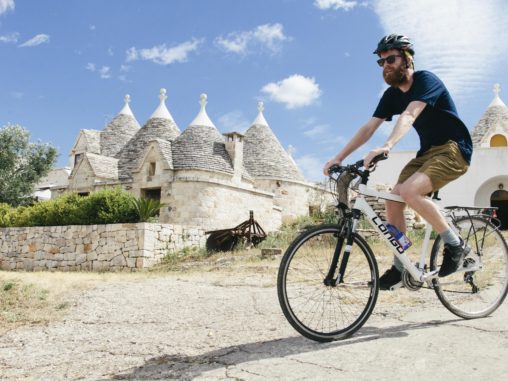 ©weareinpuglia.com, Vincenzo Pioggia
©weareinpuglia.com, Vincenzo Pioggia
By Stephen Brewer
Only a couple of months ago I was walking down a rough cobblestone path in Ginosa, in Puglia farm country, past ancient dwellings carved out of the side of a cliff. That same day I took a long look at another improbable site, movie posters of the White Shiek, hanging on the walls of a baroque palace in Castellanata. This charming little town teetering on the edge of another gorge happens to have been the birthplace of 1920s Hollywood heartthrob Rudolph Valentino. I was a tourist with a mission here on the heel of the Italian boot, on assignment for Frommer’s Travel Guides, for whom I’ve written for many years. I’m lucky to spend much of my time in Italy, often in the beautiful Tuscan hilltown of Cortona.
All this changed, at least for the near future, at the end of February, when I left Milan at the beginning of what would become a nationwide lockdown and flew into what would soon be another lockdown in New York. Life has been turned upside just about everywhere since then, with news of soaring Covid-19 infections becoming more dire by the day.
As I hunker down in the ghost town that New York has become, I like to think about the many happy years I’ve spent in Italy. Obviously, this is not the time to blindly extol the sunny Italian landscapes many of us have come to love. But as we witness the unspeakable misery Italians are enduring it seems important to remember that this is the country that gave us much of what we value in Western Civilization. Italy’s 100,000 cathedrals, museums, and other cultural treasure troves house half of the world’s great art masterpieces and include 55 UNESCO Heritage sites, far more than any other country. Add to this the remarkable landscapes, the music of Rossini and Puccini, just about everyone’s favorite comfort food, and the warmth of people who even during these dark times of home quarantine serenade one another from their balconies.
It’s not wishful thinking to imagine a time when we’ll be able to venture outside again and go back to Italy, or anywhere else for that matter. That day will come, or to paraphrase Dante, the greatest of all Italian writers, one day we will see the stars again, though at this point no one can guess when. In the meantime, now that so many of us are confined indoors, the best we can do is take a vicarious look at places like Puglia. Even from afar, the long stretches of soft sand, dazzling white hilltop towns, simple but seriously transporting food and plentiful and good wine are pretty good tonics to the news cycle in these days of self-isolation.
The White Cities
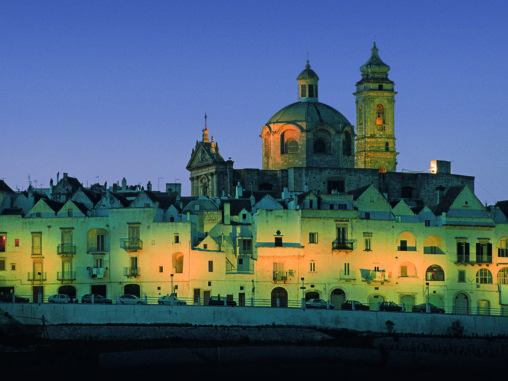
Locorotondo, ©weareinpuglia.com, FARM
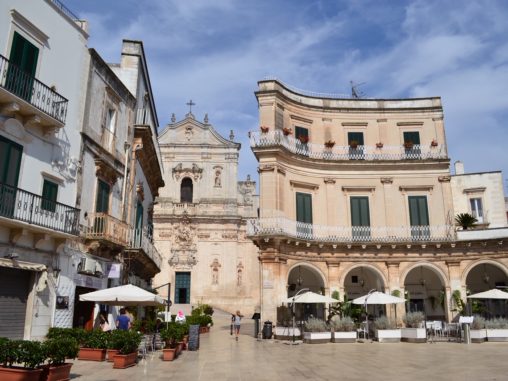 Martina Franca, ©weareinpuglia.com, Giorgio Guarini
Martina Franca, ©weareinpuglia.com, Giorgio Guarini
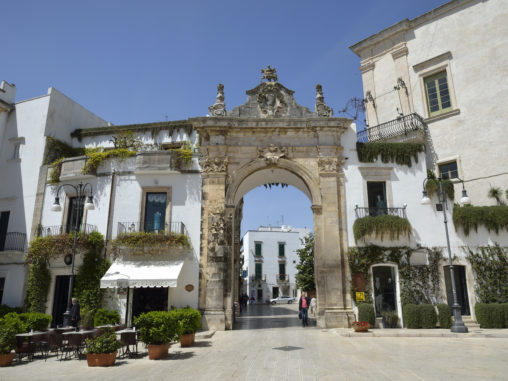 Martina Franca, ©weareinpuglia.com, Franco Cappellari
Martina Franca, ©weareinpuglia.com, Franco Cappellari
Dazzling white cities, città bianche, crown the hilltops, and the best way to see these old bastions of bleached stones is with some aimless wandering. In fact, any attempt at anything other than a casual meander is bound to be thwarted in Locorotondo, so called for its round shape. A confusing maze of concentric lanes were laid out to confuse invading pirates, and strung out along them are narrow houses with distinctive, steeply pitched roofs known as cummerse. In nearby Martini Franca, the ornate facades of palaces and churches surround airy piazzas and geraniums spill over wrought-iron balconies. The old town of Ostuni climbs a hill to a 15th-century cathedral and bishop’s palace.
The Trulli
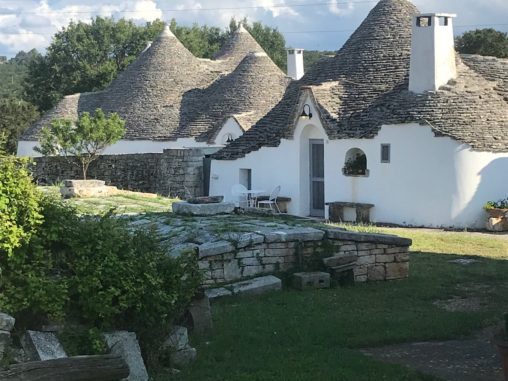 Trullo outside Alberobello, Stephen Brewer
Trullo outside Alberobello, Stephen Brewer
These behive-shaped stone houses line the lanes of Alberobello and sprout from green landscapes across the Valle d’Itria. The whimsical structures look like hobbit houses or dwellings out of a fairytale. Actually they’re fairly practical, cheap and easy to build from rough-cut stones and slabs dug out of the the fields and assembled into conical shapes without mortar. Local lore has it that trulli were also easy to disassemble, handy when the tax man came around.
The Food
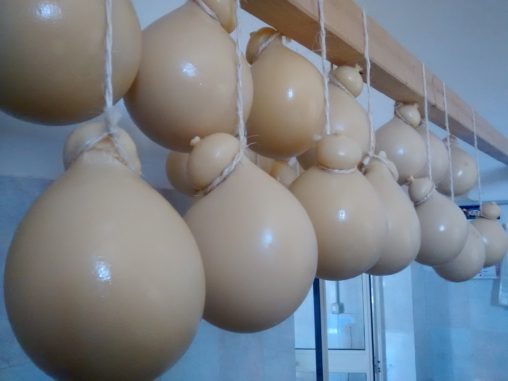 Caciocavallo cheese, Andrew Green, Flickr
Caciocavallo cheese, Andrew Green, Flickr
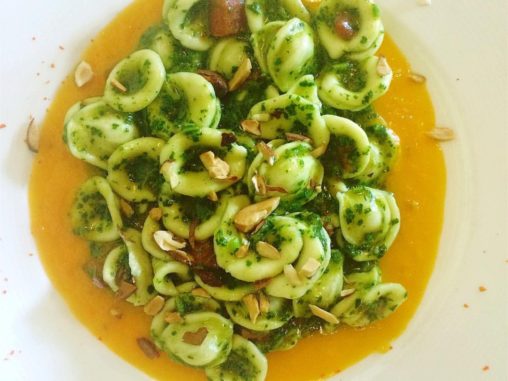 Orecchiette Daniela Ritrovato, Flickr
Orecchiette Daniela Ritrovato, Flickr
Cisternino and Ceglie Messapica are quiet little towns where flower-filled balconies overhang narrow lanes. Cisternino is known for macellerie, butcher shops where the meat you buy is grilled on the spot and served at tables out front, while out-of-the-way Ceglie is famous for almonds that find their way into biscotti di Ceglie. Restaurants throughout Puglia serve variations of the traditional cucina povera, or poor kitchen, making the most of local ingredients. Proof that less is more are such delicious dishes as octopus and local fava beans or fava puree with cime di rapa, a flavorful green. Orecchiette is the pasta of choice, often topped simply with tomatoes and bread crumbs.
Just Gorge-ous
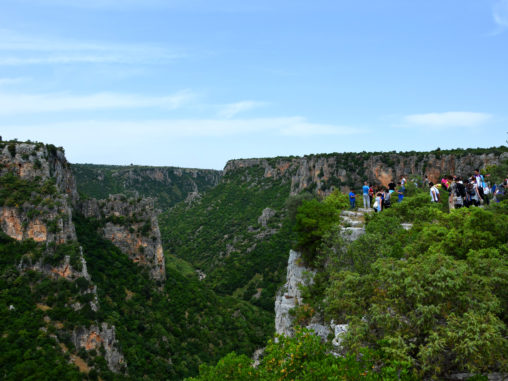 Gravina di Laterza, ©weareinpuglia.com, Giovanni Colonna
Gravina di Laterza, ©weareinpuglia.com, Giovanni Colonna
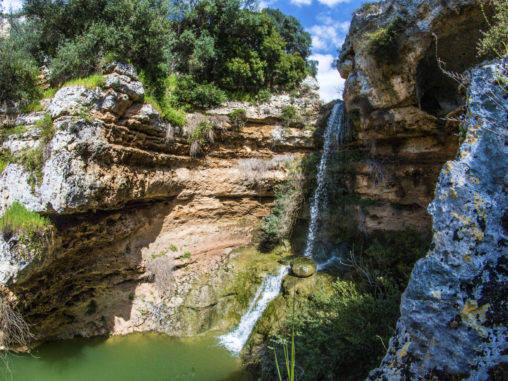 ravina di Riggio, ©weareinpuglia.com, Paolo Laku
ravina di Riggio, ©weareinpuglia.com, Paolo Laku
Trails and bike paths cross much of Puglia’s green, rocky terrain; check out www.salentobicitour.org for some of the routes. The landscapes are etched with gorges, gravine. In Ginosa and elsewhere, the walls of these deep gorges are riddled with cave dwellings that inhabitants have dug out over the centuries. High above the Gravina di Palagianello stands Castellanata, a beautiful old town with a big claim to fame. Rodolfo di Valentina d’Antonguella, aka Rudolph Valentino, was born here in 1895. He’s honored in a museum filled with movie posters and other mementos of the heartthrobs’s Hollywood fame, cut short when he died of perotinitis at age 31.
The Beaches
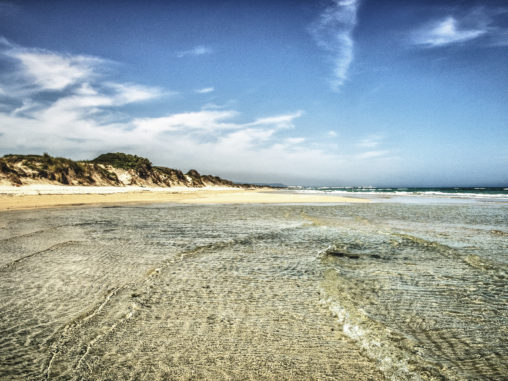 Beach near Ostuni©weareinpuglia.com, Leonardo D’Angelo
Beach near Ostuni©weareinpuglia.com, Leonardo D’Angelo
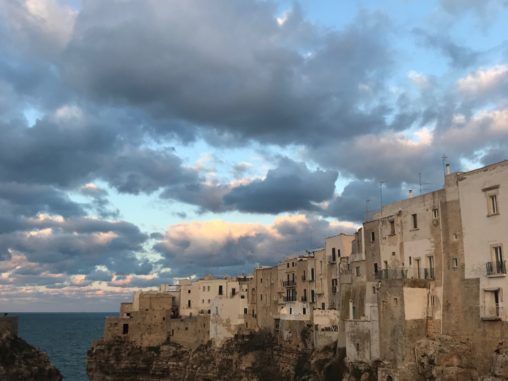 Polignano a Mare, Stephen Brewer
Polignano a Mare, Stephen Brewer
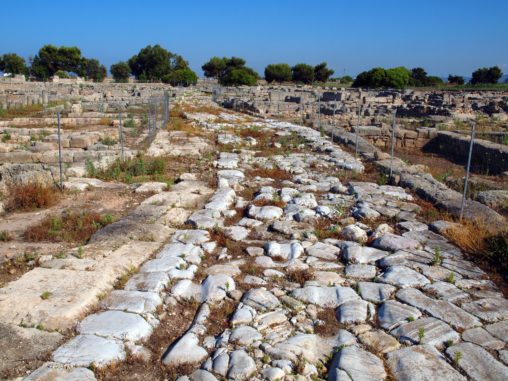
The sea is a big part of the appeal of Puglia, but soft sands and clear waters are not the only reward for seeking out one of the beaches on either side of the peninsula. Behind the spectacular coastlines of the Gargano Peninsula are forests of oak and beech, remnants of the ancient Foresta Umbra that once carpeted much of central Europe. On the coastal flats around Fasano are the ruins of Egnazia, a flourishing Greco-Roman trading center where the Trajan Way bisects the ruins. It’s hard to choose a favorite among the picturesque seaside towns strung out along the coast, but a top contender is Poglignano a Mare, a medieval warren set atop limestone cliffs.

